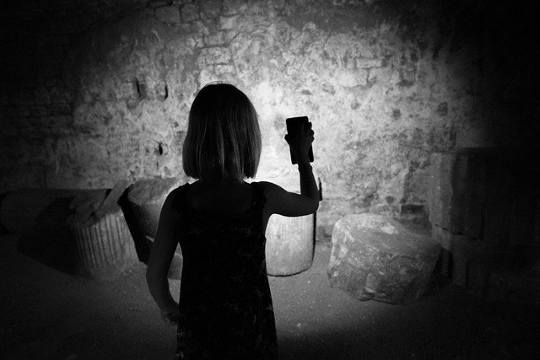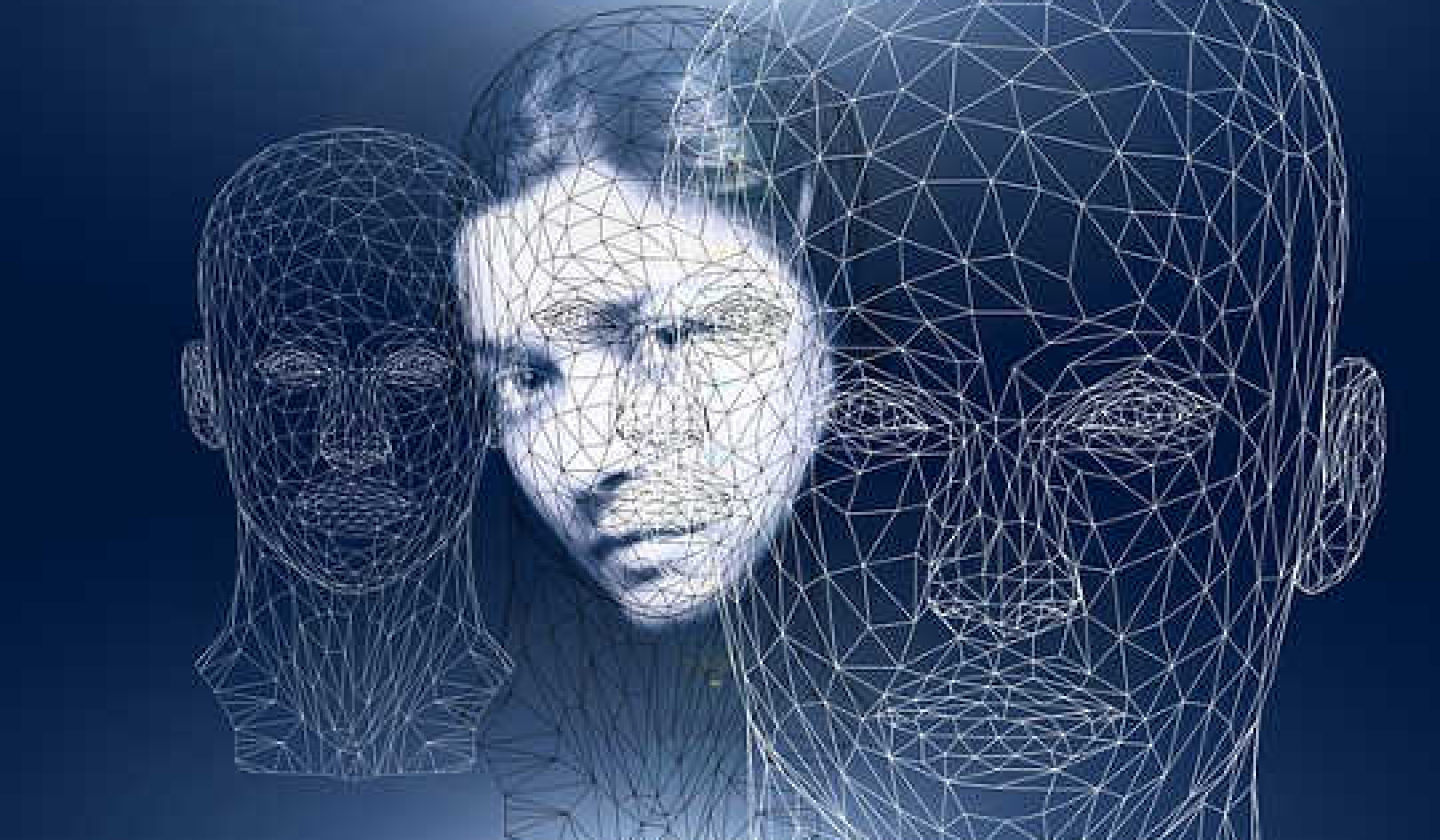
Image by Rudy and Peter Skitterians
“Fear is only as deep as the mind allows.”
—Japanese proverb
In the previous chapter we addressed the importance of raising our level of consciousness. Now we need to look at some of the challenges that may present themselves. There are several of these, but they are all based on some form of fear.
The Snake and the Rope
Once a young woman was walking down a country lane at dusk. It was neither full sunlight nor the dark of night. There was just enough light for her to stay on the path, no colours were visible, only grey shapes and shadows.
Up ahead she saw something on the road, it was long and thin. A snake!
Her heart pounded, her breathing became shallow and rapid. She was frozen in terror, paralyzed, unable to move forward and fearful of retracing her steps in the gathering dark.
Then she remembered that she had a flashlight in her backpack. With a shaking hand she pulled it out and switched it on. Now she could back away from the danger and try again tomorrow when surely the snake would be gone. First however, she cautiously directed the beam at the fearsome shape lying on the path.
The moment the light shone on the snake, she saw that it was just an old piece of rope lying on the road, discarded in the dust.
Relief washed over her. As quickly as the fear had appeared, it evaporated. She chuckled at her foolishness and continued forward on her way, happy and free from fear.
~ contemporary story, originally told by the philosopher
Adi ?a?kara (788 – 820 CE)
This Story Is Our Story
We are that young woman, and this story is our story. The road is the journey of our life. The dim light at dusk is the ordinary level of our awareness in which we dwell. The snake represents the entirety of our illusions, our assumptions, jealousies, fears, infatuations, obsessions based on half-understood information and incomplete knowledge. The light from the flashlight is the illumination of true and complete knowledge.
The transformation of our understanding occurs at the instant that wisdom illuminates the situation. The light immediately banishes mistaken understanding, and this dispels the shadow of fear without further effort. This is because the “fear-snake” was never there. It only existed in our imagination. It was only ever a piece of rope dimly lit on the road ahead. The light of knowledge makes that clear and dispels the fear.
What Does Sanskrit Teach Us about Fear?
The Sanskrit word for “fear” is “bhayam.”
“Bhayam”, meaning fear, alarm, dread, apprehension.
The pre-eminent Sanskrit scholar and sage P??ini rather curiously tells us that “in fear there is fear.”
What can he mean by this? P??ini is telling us that you will only experience fear when you are fearful.
In other words, he is speaking of fear that feeds upon itself. This fear is essentially irrational. It arises as a sort of nameless dread when some apparent trigger appears, but it collapses when a bit of light is shone on the illusory “cause” of the fear. He is telling us that this kind of fear is its own cause. When we shift our focus, the fear disappears.
This is the kind of fear that President Franklin D. Roosevelt (FDR) spoke of in his inaugural address in 1933,
“…let me assert my firm belief that the only thing we have to fear is fear itself – nameless, unreasoning, unjustified terror which paralyses needed efforts to convert retreat into advance.”
The fear being referred to is a baseless false emotion that paralyses us or makes us do and say things under its spell. FDR echoed P??ini and the ancient Sanskrit wisdom about fear.
It is this kind of fear that Conscious Confidence addresses and banishes. Before we get to how to make that happen, however, let’s just look at a couple of different types of fear which are actually useful and do have a basis in reality.
Two Types of Useful Fear
There are two other types of fear experiences that have their purpose.
The first is the fight-flight response to actual immediate and present danger. This is a survival mechanism.
This fear response is triggered in situations of perceived threat. It floods through the body in an instant. This response is designed to remove us from danger as quickly as possible by flooding our body with adrenaline, clearing our mind of any thinking that is not relevant to the situation. It gets us running away from any immediate threat to life and limb. If danger threatens, this is exactly the response we want!
The second type of useful “fear” experience arises when we are called upon to give a performance or do something in front of others. This form of anticipation prepares us to give our best and can be very useful. It lifts us out of our ordinary considerations, so we can enter the creative “performance space” where the magic can happen. It is a form of respect for our audience. Actors, singers, speakers and dancers know about this space.
However, we all know that it can get out of control and can turn into performance anxiety. Stage fright can paralyze us and interfere with the performance rather than enhance it. The healthy anticipation of a performance is transformed into “snake-fear.” Although we are not actually facing the threat of a tiger chasing us across the stage, this is how our bodies and minds react.
This is the type of baseless fear which we now have to address. It is that “snake-fear,” that has no basis in reality. I call it the Fear Shadow.
The Fear Shadow
Conscious Confidence is like the sun and the Fear Shadow is like a cloud that conceals the sun; essentially distorting reality. The sun is always there, ever-shining, but on cloudy days it appears as if the sun has vanished. We don’t usually think about fear being a shadow. We usually think about fear having its own reality. This assumed reality is simply not true. In fact, the more we grapple with unreal fear, the more it seems to strengthen and grow.
When, through ignorance, we step out of the sunlight into the twilight world of the Fear Shadow, the energy is misused and creates the opposite experience. So, under the Fear Shadow, instead of connecting with our innermost being and the strength of our core values, we lack self-knowledge and are unclear about who we really are. Instead of a naturally positive attitude, we find ourselves locked in negativity. Under the Fear Shadow courage becomes fear, love becomes cold and aloof, simplicity turns to complication, and creativity becomes narrow and unimaginative.
The Comfort Zone
Many people get caught in this Fear Shadow. In fact, for some people the Fear Shadow can darken their entire life. To survive, we create a “comfort zone” around us. Within that comfort zone, we move, act and speak fairly efficiently. We can run a company or a nation, raise a family or coach a football team.
However, what happens when we are pushed to the edge of that comfort zone? This is when we are tested. At the limits of our comfort zone, we begin to experience unsettling and uncomfortable feelings such as blame, apathy, fear, anger, excuses and a host of others. We all have our default position.
How about the regular meditator who experiences bliss and peace when everything is calm and quiet, but becomes angry and frustrated when their neighbour starts drum practice? Or the high-achieving young woman who is efficient, competent and hard-working, but becomes paralyzed with self-doubt when a colleague passes judgement on her work.
There are talented intelligent people who suffer from social anxiety in new situations. There are brilliant artists who can perform perfectly in the practice studio but find excuses to avoid performing in public.
The list goes on. These are people pushed to the edge of their comfort zone.
The Fear Barrier
The edge of our comfort zone is, in fact, an energy barrier that appears at the point where we repeatedly shy away from the unknown, the uncomfortable and the unfamiliar.
This creates the Fear Barrier that maintains an area of apparent efficiency, success, skills and achievement within an invisible limiting sphere, such that when we are pushed by the unfamiliar, the surprising or the challenging, we can go to pieces. This can even lead to our physical and/or mental health being significantly affected. Relationships can suffer, self-esteem can dissolve and so on.
What if we learn to cross the Fear Barrier? What lies on the other side of the imaginary line? Freedom, creativity, power, growth and Conscious Confidence.
I have discovered an effective way to come out from under the Fear Shadow and to cross the Fear Barrier. Instead of calling in the snake charmers, I propose a visit to the flashlight store!
The process is to turn our attention away from the fear, and instead establish ourselves in the light of wisdom. This is the light which transforms all our illusory snakes into harmless pieces of rope. It allows us to walk confidently and courageously forward on our path to happiness, strength, success and fulfillment.
Transform illusory Snakes Into Harmless Pieces Of Rope
All the practices in this chapter are a way of turning on the flashlight before the dimness of twilight turns to night. If we strengthen ourselves through knowledge, wisdom and practice, then we will have the resilience and resources when we need them to step clear of the Fear Barrier and stay in the light of our true magnificent self.
The best time to practice is when you don’t seem to need it. Establish a practice in the easy times so you’re strong and prepared for the challenging times. Easy times are for practice, so that we are ready in the challenging times. This is how we learn and grow. We have to be like the runner, or the public speaker who prepares before the main event.
So, what should we practice? In this chapter the practices are designed to establish ready access to stillness. Stillness is the key quality to nurture within yourself.
Where fear is concerned, it may seem counter-intuitive to practice inner stillness. However, fear is dependent on movement; it is a form of constant activity. Therefore, the antidote is stillness. The power and light of knowledge which turns the “fear-snake” into a rope, comes from this strong inner still point.
Your practice of stillness will weaken the fear and make you steady and resilient. Having access to inner stillness, will allow you to grow and discover new potential within yourself.
The Practices of Inner Stillness
The Anchor
The Anchor can help you establish a strong and steady inner still point. This still point is a place inside yourself beyond the chatter and unsteadiness of the mind, and the constantly changing feelings. It is still, calm, silent, and peaceful. It is a point from which you can observe the world accurately and from which you can readily respond to take effective action.
Practice this exercise at least once or twice a day for two minutes. Try to make this a regular part of your life. Start with two weeks.
Sit comfortably and relaxed in a chair.
Keep your eyes open; let yourself perceive forms, shapes and colours without naming them.
Slowly take a deep breath in, and then exhale. Repeat this slow deep breathing twice more, relaxing each time you exhale.
Become aware of your body sitting in the chair.
Feel your feet touching the floor.
Feel your clothes touching your skin.
Feel the air touching your face and hands.
Let the listening open wide and expand; listen past any thoughts in the mind; listen without naming any of the sounds.
Expand your awareness to include all sounds, people, objects, the entire environment and beyond.
The Observer
This exercise is for developing equanimity in the face of changing emotions.
Practice this exercise at least once a day for two minutes:
Sit comfortably and relaxed in a chair.
Slowly take a slow deep breath in, and then exhale. Repeat this slow deep breathing twice more, relaxing each time you exhale.
Come to an inner still point and rest there.
Stay present to feelings, all feelings; watch them rise and fall. Stay present without any commentary or narrative about the feelings.
Remain still and present to the feelings; if commentaries, opinions and judgments arise, let them pass too.
Stay present and watching as a witness, or observer, to all the feelings.
Watching and witnessing without preference is the key; the feelings may be positive and blissful, negative and uncomfortable, or relatively neutral; keep allowing them to rise and fall whilst remaining still as the witness.
The Flashlight
This exercise is adapted from the Taittiriya Upanishad. It involves switching on the flashlight of wisdom.
Practice this exercise at least twice a day.
Stop what you are doing for a moment. Take at least one deep relaxing breath.
Think of someone you know or someone you have heard of who you consider to be wise.
Ask yourself deliberately: “What would that wise man or woman think now?” The questioning is the important thing; release any expectation of any particular answer and stay open and still.
Expansion
The previous exercises, The Anchor, The Observer and the Flashlight, are designed to be practiced in both the easy times, and when challenges strike.
This practice, Expansion, is for the times when you are pushed to the edge of your comfort zone. Together with the other three practices, it is here to help you build up your muscle to cross the Fear Barrier.
The Expansion exercise is about remaining present and still, while listening beyond those emotions which appear at the outer limits of the Fear Barrier. These emotions can drive us back into our comfort zone.
Practice this when you feel the challenge of being pushed to the edge of your comfort zone.
Stop what you are doing and become grounded by feeling your feet on the floor. Become aware of your whole body from top to toe even while feeling under pressure. This brings you into the present moment.
Take a slow deep breath in, and then slowly exhale. Repeat this slow deep breathing twice more, relaxing each time you exhale.
Come to an inner stillness. Witness the challenging emotional responses in the body and mind. This may take a little time to settle into, so keep breathing, remaining aware and watching as the emotions play out.
Then let the listening expand past the thoughts and feelings in the body and mind, feel yourself expanding and growing larger than the emotional reactions. Feel that the awareness encompasses those emotional challenges.
Every time the attention and listening are drawn back into the emotions, gently release again and open up the awareness and listening as you keep letting go.
You may find it useful to try this exercise while engaged in gentle walking. The physical activity can help to redirect the energy from the challenging feelings.
©2020 by Sarah Mane. All Rights Reserved.
Excerpted with permission from the book: Conscious Confidence.
Publisher: Findhorn Press, a divn. of Inner Traditions Intl.
Article Source
Conscious Confidence: Use the Wisdom of Sanskrit to Find Clarity and Success
by Sarah Mane Drawing on the timeless wisdom of Sanskrit, Sarah Mane offers a practical confidence-boosting system derived from the deepest meanings of Sanskrit concepts, complete with practical exercises. She outlines the fourfold energies of Conscious Confidence and shows how to discover a steady inner source of compassion, self-direction, and self-empowerment. (Also available as an Audiobook and a Kindle edition.)
Drawing on the timeless wisdom of Sanskrit, Sarah Mane offers a practical confidence-boosting system derived from the deepest meanings of Sanskrit concepts, complete with practical exercises. She outlines the fourfold energies of Conscious Confidence and shows how to discover a steady inner source of compassion, self-direction, and self-empowerment. (Also available as an Audiobook and a Kindle edition.)
About the Author
 Sarah Mane is a Sanskrit scholar with a particular interest in the wisdom of Sanskrit as a practical means to life-mastery. Previously a teacher and school executive, today she is a transformational and executive coach. Visit her website: https://consciousconfidence.com
Sarah Mane is a Sanskrit scholar with a particular interest in the wisdom of Sanskrit as a practical means to life-mastery. Previously a teacher and school executive, today she is a transformational and executive coach. Visit her website: https://consciousconfidence.com





























